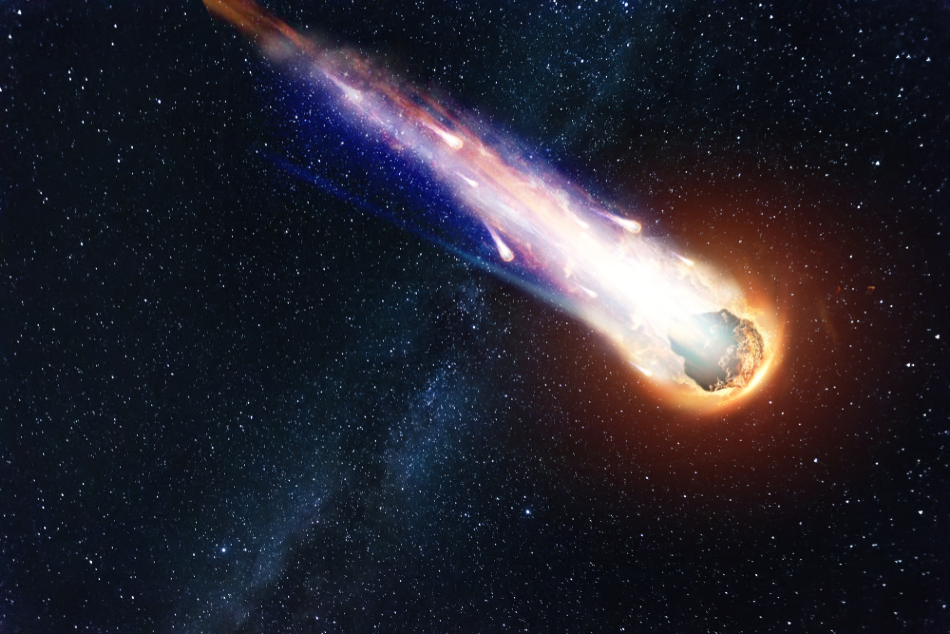
Image Credit: Marko Aliaksandr/Shutterstock.com
A Story of Light Pressure
In 1607, a comet appeared over Europe. This was Halley’s comet, later named after the astronomer who successfully predicted its reappearance and 75-year orbit in 1759.
However, in 1607, it was just another mysterious celestial body. It was viewed by the German astronomer and mathematician Johannes Kepler, among others, who watched it with great interest.
Kepler wondered what caused the comet’s broad tail to spread away from it across the sky. He thought that sunlight must be heating the comet, and freeing material from it.
Kepler’s hypothesis would later turn out to be correct. This force from sunlight is called radiation pressure. It is millions of times weaker than gravity, but in the vacuum of space, it is effective enough to propel satellites using solar sails.
Purdue University
Scientists from Purdue University have used radiation pressure, in the form of concentrated lasers, to create the world’s fastest spinning object. The team succeeded in rotating a dumbbell-shaped nanoparticle at more than 300 billion rpm. The team broke their own 2018 world record that span the nanoparticle at a fifth of its new speed.
The Steps to Discovery
In 2013, scientists at the University of St. Andrews made headlines by rotating a tiny sphere of calcium carbonate in a vacuum chamber, inducing a record-breaking (for the time) 600 million rpm.
In 2015 Tongcang Li, Assistant Professor of Physics & Astronomy and Electrical & Computer Engineering at Purdue, set up a similar experiment, but instead of a sphere he used a diamond nanoparticle.
Li found that in a low vacuum, the diamond nanoparticle only vibrated, and didn’t spin. In a higher vacuum, it was lost entirely.
Working in higher vacuum conditions required a change from diamond to pure silica nanoparticles. With this change, Li produced an ultra-fast rotating particle, but didn’t have a clear idea of what shape the particle was.
It took Li over a year to reproduce the shape of the particle involved. This shape turned out to be two silica nanoparticles which formed a dumbbell. By changing the polarization of the laser, Li found he could rotate or vibrate the particles.
Implications of Li’s Discovery
As well as the new record in rotation speed, the spinning nanoparticles can measure torque at levels 600–700 times more sensitive than any previous device. Li believes this nanoscale torque detector will be used to measure and investigate quantum effects such as vacuum friction.
While we have always thought of a vacuum as an entirely empty space, it is theorized that at the quantum level pairs of virtual particles constantly appear in and out of existence. It follows that even objects in a vacuum might experience minuscule level of drag caused by these virtual photons – a quantum fluctuation in a vacuum that is limited by the uncertainty principle.
The nanotorque detector could also be used to measure these effects, as well as the Casimir effect and nanoscale magnetism, which could eventually allow engineers to develop and control nanoscale electronic devices.
A Surprising Link
The rotating dumbbell has a surprising link to a historic 18th-century physics experiment called the Cavendish experiment, in which the physicist Henry Cavendish determined key values that describe the strength of gravity and its relation to mass using an apparatus consisting of two spheres in a dumbbell configuration. This nanoscale version of his experiment is another step towards examining the quantum nature of gravity.
References and Further Reading
Purdue University (2020) Light powers world’s fastest spinning object Available at: https://www.purdue.edu/newsroom/releases/2020/Q1/light-powers-worlds-fastest-spinning-object.html (Accessed on 27 February 2020)
Sakharkar A. (2020) World’s fastest spinning object powered by light Available at: https://www.techexplorist.com/world-fastest-spinning-object-powered-light/29226/ (Accessed on 27 February 2020)
American Physical Society (2018) The World’s Fastest-Spinning Object Could Lead to Quantum Insights Available at: http://physicsbuzz.physicscentral.com/2018/09/the-worlds-fastest-spinning-object.html (Accessed on 27 February 2020)
The Planetary Society The Story of LightSail, Part 1 Available at: https://www.planetary.org/explore/projects/lightsail-solar-sailing/story-of-lightsail-part-1.html (Accessed on 27 February 2020)
Disclaimer: The views expressed here are those of the author expressed in their private capacity and do not necessarily represent the views of AZoM.com Limited T/A AZoNetwork the owner and operator of this website. This disclaimer forms part of the Terms and conditions of use of this website.